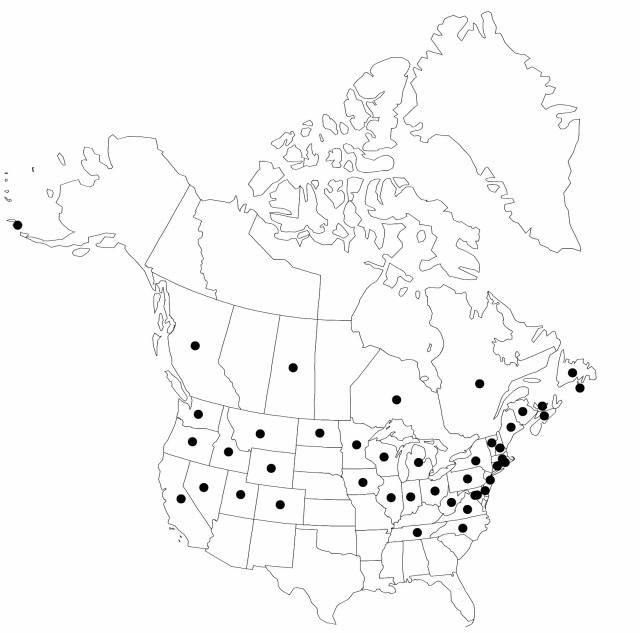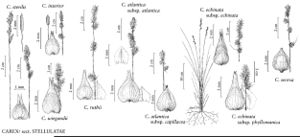Carex echinata subsp. echinata
Culms 10–90(–135) cm. Leaves usually 0.7–2.7(–3.3) mm wide; widest leaf 1–2.4(–2.7) mm wide. Inflorescences lax to dense, 2.5–8 cm; distance between basal 2 spikes usually longer than the basal spike. Perigynia veined or not adaxially over achene, (2.6–)2.9–3.6(–4) mm, margins often serrulate.
Phenology: Fruiting late spring–early summer.
Habitat: Bogs, swamps, peaty or sandy shores of streams or lakes, wet meadows, usually in acidic soils
Elevation: 0–3200 m
Distribution

St. Pierre and Miquelon, B.C., N.B., Nfld. and Labr. (Nfld.), N.S., Ont., P.E.I., Que., Sask., Alaska, Calif., Colo., Conn., Del., D.C., Idaho, Ill., Ind., Iowa, Maine, Md., Mass., Mich., Minn., Mont., Nev., N.H., N.J., N.Y., N.C., N.Dak., Ohio, Oreg., Pa., R.I., Tenn., Utah, Vt., Va., Wash., W.Va., Wis., Wyo., Eurasia.
Discussion
Carex echinata subsp. echinata is a complex, variable entity; plants of relatively sterile habitats from Newfoundland to Minnesota and south locally to the mountains of Tennessee and North Carolina have very narrow perigynia with the spikes either in congested heads or more laxly arranged and may be called C. echinata var. angustata (J. Carey) L. H. Bailey. Plants from the San Bernardino Mountains, Coast Ranges, Sierra Nevada, and some of the volcanic peaks in California, Oregon, and Washington tend to have very elongate inflorescences with widely spaced spikes and may be called C. echinata var. ormantha Fernald. In some areas these variants appear reasonably distinct, but over most of the species range intergrades between the extremes are frequent.
Selected References
None.
